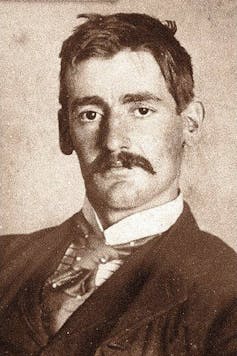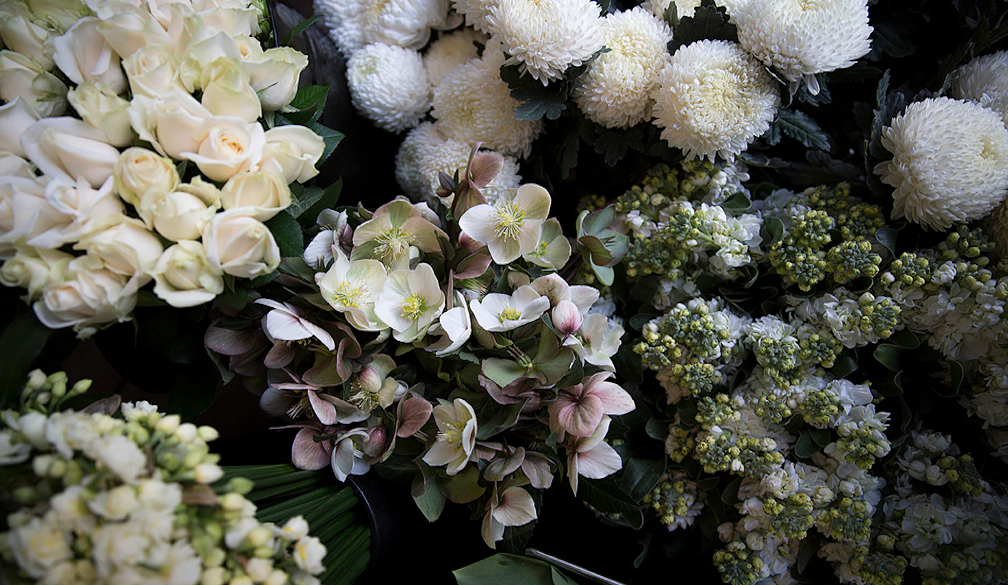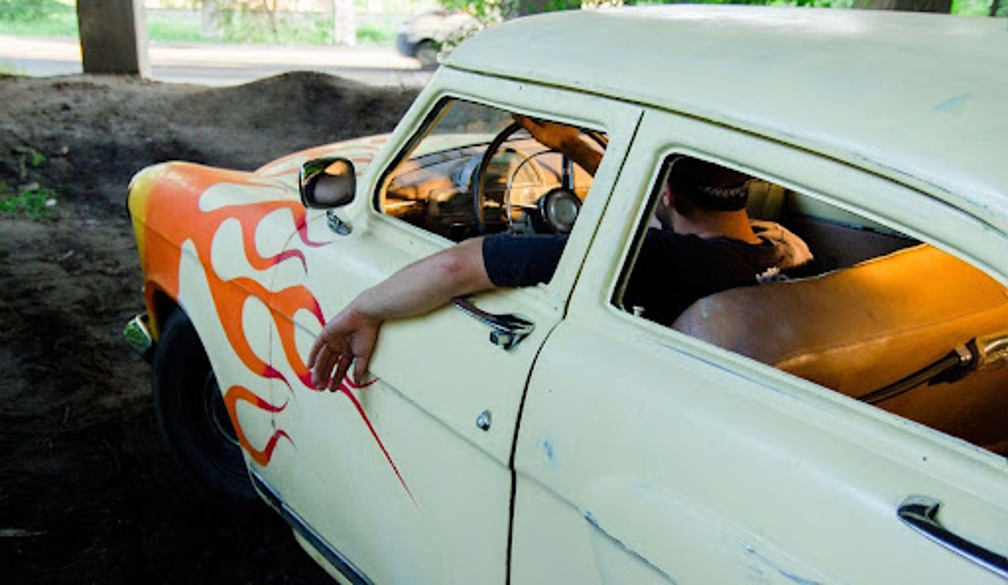AustraliaŌĆÖs ŌĆświld recitersŌĆÖ sought to change the world verse by verse. Who are todayŌĆÖs provocateurs?
- Written by Anna Johnston, Professor of English Literature, The University of Queensland

In his latest book, Peter Kirkpatrick retrieves from Australian cultural history the compelling figure of the ŌĆ£wild reciterŌĆØ, as a reviewer in the 1920s termed amateur elocutionists.
From the late 19th century, men, women and children recited popular verses to audiences who shared in the mass appeal of poetry. Their performances could become histrionic or strident.
Review: The Wild Reciter: Poetry and Popular Culture in Australia, 1890 to the Present (Melbourne University Publishing)
Bush ballads by Henry Lawson and A.B. ŌĆ£BanjoŌĆØ Paterson, as well as English and American classics and topical verses, formed the repertoire of public speakers, such as the ŌĆ£Tangalooma TigerŌĆØ ŌĆō one of many eccentrics who frequented SydneyŌĆÖs Domain, drawing large crowds.
Children who learned elocution as a form of self-improvement and social mobility would practise their craft at local events. In 1933, Nancy Turner from Lithgow performed James Elroy FleckerŌĆÖs War Song of the Saracens at the first City of Sydney Eisteddfod. The Daily Telegraph reported that Turner
recited like a ferocious kitten, and screwed her eyes up tightly when she shouted ŌĆ£We have marched from the Indus to Spain and, by God, we will go there againŌĆØ, as if she meant it.
ŌĆ£Light-years behind Taylor Swift in terms of high-class showbiz professionalism,ŌĆØ writes Kirkpatrick, ŌĆ£the wild reciter represents poetryŌĆÖs neglected and ŌĆō in the best possible sense of the word ŌĆō vulgar past, offering a perspective that might also speak to its present and future as a demotic art.ŌĆØ
A privileged place
We turn to poetry for many of lifeŌĆÖs significant moments. Weddings and funerals remind us that rhyming verse has a privileged place in human communication. The form is freighted with meaning and can express heightened emotion. Achingly earnest or spiritually intense, romantic or maudlin, poetic language affects us, even in popular usage such as greeting cards.
In these instances, we do not always hear ŌĆ£goodŌĆØ poetry. Aesthetic qualities are often ranked second to a poemŌĆÖs timely message or the personal feelings of the poetic messenger.
George Orwell coined the phrase ŌĆ£good bad poemsŌĆØ in 1942 to describe 19th-century favourites, such as Rudyard KiplingŌĆÖs If and the boysŌĆÖ own imperial adventure poem Gunga Din. Orwell called such poems ŌĆ£vulgarŌĆØ; these days we might call them clich├®d (and racist). Yet he observed that they expressed emotions ŌĆ£which nearly every human being can shareŌĆØ.
Orwell also reminded his readers that poems are mnemonic devices. Many older Australians can still remember verses from their schoolrooms. According to historians Martyn Lyons and Lucy Taksa, those brought up around the first world war were a ŌĆ£poetry generationŌĆØ. Many of those brought up in the aftermath of the second world war can recite verses from the school readers that used to structure their English literature classes.
Being able to recite as well as appreciate poetry was seen as a foundational educational skill, even if children mostly remembered stirring lines such as ŌĆ£the boy stood on the burning deck,ŌĆØ from Felicia HemansŌĆÖ Casabianca.
As political commentator Rory Stewart explains in his BBC podcast The Long History of Argument, speaking and arguing well have been seen for millennia as the key to a good education and the building blocks of democracy. Turn of the century experts, such as the American Alfred Ayres ŌĆō the pen name of Thomas Embly Osmun (1826ŌĆō1902) ŌĆō advocated a modern style of verse performance.
Late Victorian elocution, Ayres wrote, was characterised by
orotunds, sostenutos, whispers and half-whispers, monotones, basilar tones and guttural tones, high pitches, middle pitches and low pitches, gentle tones, reverent tones, and all the rest of that old trumpery that has made many a noisy, stilted reader, but never an intelligent, agreeable one.
The old school of elocution, he argued, produced ŌĆ£readers occupied with the sound of their own voicesŌĆØ. Modern elocution, by contrast, sought to clarify ŌĆ£the art of speaking words in an intelligent, forcible, and agreeable mannerŌĆØ.
Appreciating the art of rhetoric may become ever more important in our ŌĆ£post-truthŌĆØ world. In the age of artificial intelligence, literature professors like me are considering a return to oral assessments to verify our university students have read and understood the course readings, not just regurgitated a ChatGPT summary.
Songs and mass media
Kirkpatrick enjoys disrupting assumptions about high and low culture. He begins his book with Taylor Swift, whose 2024 album The Tortured Poets Department and subsequent world tour spawned events, media articles and academic conferences. He ends by speculating about who might be appointed as AustraliaŌĆÖs first Poet Laureate, suggesting indie rock singers such as Nick Cave and Paul Kelly, or First Nations rapper The Kid Laroi, have a stronger hold on the public imagination than literary poets.
He has a soft spot for Evelyn AraluenŌĆÖs bestselling collection Dropbear, but wonders how a First Nations poet would feel about a position intended to amplify the literature of the colonial state.
The most sustained focus on womenŌĆÖs writing in The Wild Reciter is reserved for Lesbia HarfordŌĆÖs ŌĆ£mortal poemsŌĆØ. Like the colonial Irish-Australian poet Eliza Hamilton Dunlop, Harford set and sang her poems to Irish tunes. Whether Harford meant her poems to be sung by others remains an elusive question. But Kirkpatrick rightly notes that ŌĆ£we now hold song lyrics in our heads in the way that HarfordŌĆÖs generation held poemsŌĆØ.
Recurring poetic motifs, such as horses, allow Kirkpatrick to show how bush ballads contributed to emerging forms of 20th-century entertainment. Popular Australian themes would have a global influence, as modern technologies brought imagined communities together via radio, cinema and popular music. Kirkpatrick links PatersonŌĆÖs The Man from Snowy River (1890) to Buffalo Bill and touring Wild West shows, and later to the Sydney 2000 Olympic Games opening ceremony.
Identifying how poetry has interacted with different media challenges the common assumption that poetry is formal or stuffy: something confined to university study and highbrow poetry readings. Kirkpatrick argues, for example, that Kenneth SlessorŌĆÖs appreciation of recorded music influenced his verse, as did his work as a cinema critic for the popular magazine SmithŌĆÖs Weekly.
Radio programs provided opportunities for Ronald McCuiagŌĆÖs light verse to reach audiences from the 1940s to the 1960s. John Laws, characterised by Bob Ellis as ŌĆ£the worst poet in the whole history of the entire universeŌĆØ, was certainly advantaged by his long talkback radio career, which ensured a market for his five collections of poetry.
Kirkpatrick is adept at waspish summaries of bad poetry. Celebrity brought attention to Clive JamesŌĆÖ poems ŌĆō more, perhaps, than they deserved. ŌĆ£ItŌĆÖs not simply the earnestness of so many of his later poems that disables them,ŌĆØ writes Kirkpatrick: ŌĆ£the humorous ones are just as likely to disappoint.ŌĆØ



















